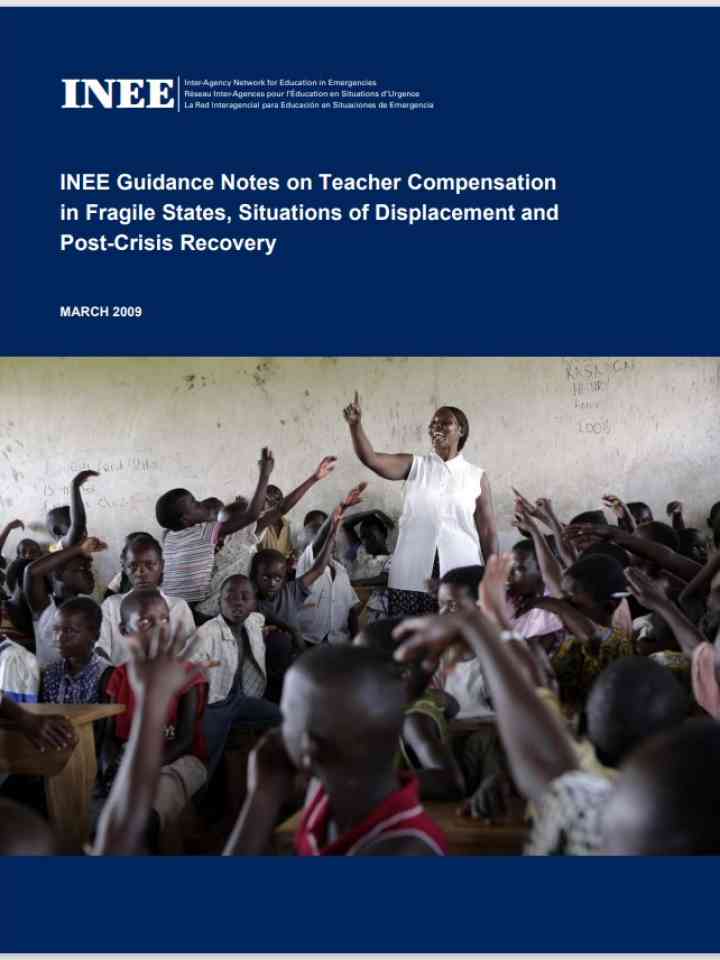INEE Guidance Notes on Teacher Compensation in Fragile States, Situations of Displacement and Post-Crisis Recovery
Along with structures, supplies, curricula and furniture, appropriately qualified teachers are critical for the provision of quality, protective education. However, in fragile states, situations of displacement and post-crisis recovery, teachers are often underpaid or not paid at all. Meanwhile, there are no policies or guidelines that exist on teacher remuneration in these contexts. This has led to inconsistencies in the eligibility for, amount and frequency of teacher stipends among and within non-governmental organisations (NGOs), government ministries and UN agencies. In the long-term, these insufficiencies and inconsistencies can lead to a brain drain from the teaching force thus weakening education systems. Non-payment of salaries can also contribute to social unrest, and to learning situations in which children are vulnerable to exploitation.
The INEE Guidance Notes on Teacher Compensation in Fragile States, Situations of Displacement and PostCrisis Recovery (INEE Guidance Notes) were developed to address this critical challenge to quality education, and as such, provide a suggested framework for compensating teachers. They are organised around three themes (A, B and C below) and are intended for staff within education authorities (at national, county and district levels), and for staff of donors, United Nations (UN) agencies, community-based organisations and NGOs working to provide education in fragile states, situations of displacement and post-crisis recovery.
The INEE Guidance Notes are not intended as a prescriptive solution or a blueprint response to issues of compensation. As such they should be adapted to the local context, and used as a platform for planning and implementing an appropriate response to teacher compensation. Under each theme, there are a number of points for consideration for agencies (including education authorities) to reflect upon as they plan and implement their interventions. These are illustrated with examples of good practice, lessons learnt and illustrative strategies from a range of refugee, internally displaced person (IDP), returnee and overall population contexts to assist the reader in identifying which approaches are likely to be effective in their particular situation.
Explore further
